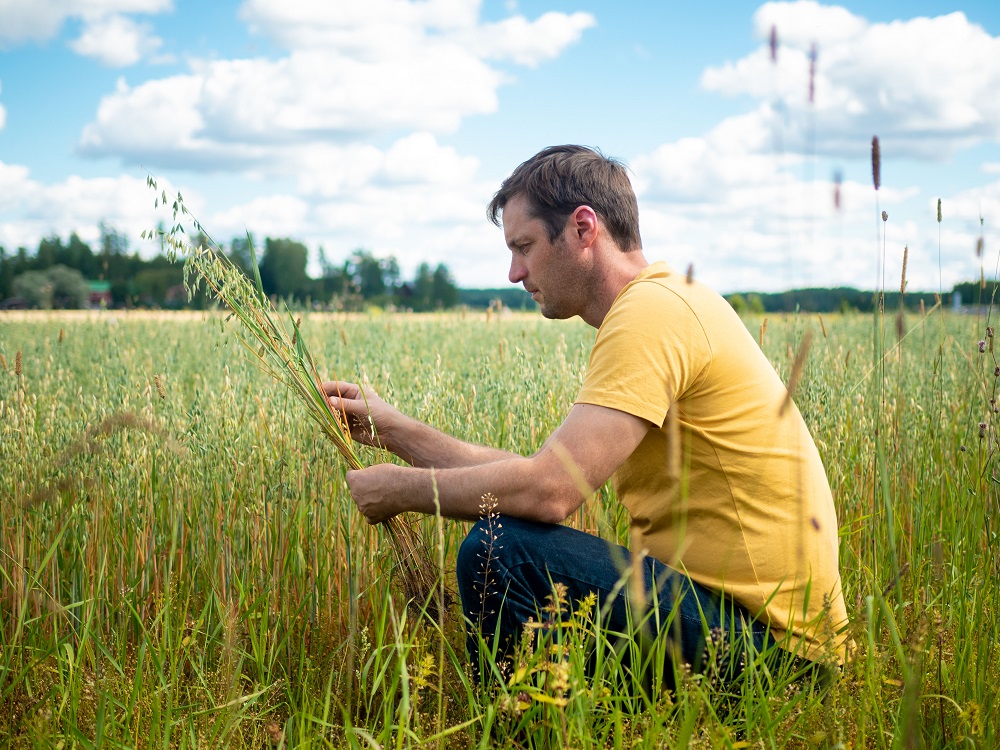Environmental problems resulting from the use of fossil fuels and mineral fertilizers have created a need for completely new food systems that produce enough food for a growing population, while reducing the environmental impacts of food production. From the sustainability perspective, the use of fossil fuels should be left in the past and food production should shift to renewable energy without energy generation competing over resources with food production.
Kari Koppelmäki’s recent doctoral dissertation, examined in the Faculty of Agriculture and Forestry at the University of Helsinki and at Wageningen University, creates a model for circular food production relying on localized resources. What is key in this model of agroecological symbiosis (AES) is that biomass and energy generation as well as nutrient recycling are integrated at a feasible spatial scale, enabling nutrient recycling and energy generation using biomass that is not in competition with food production.
– AES represents a place-based food production network which offers an alternative for the current centralized and globalized food system. A network of agroecological symbioses (NAES), consisting of several localized AES systems, forms a climate-resilient food system that is separate from the fossil economy and recycles nutrients, Koppelmäki says.
Elements of a circular food system
Based on the results of the doctoral dissertation, a circular food system consists of 1) the integration of biomass, nutrients and energy; 2) the use of perennial leys in biomass production and biological nitrogen sequestration; and 3) the horizontal and vertical integration of actors and operations at the food systems scale which is functional both from the biophysical and physical perspective.
To address the circular economy, the doctoral dissertation proposes the concept of nested circularity to help understand the connections between biomass, nutrients and energy on several different spatial scales.
– Considering closed nutrient cycles, the appropriate scale depends on what is examined. For example, nutrient cycles in livestock production should be optimized on as small a scale as possible, as manure transport is not financially profitable. Instead, closing the nutrient cycles resulting from food consumption cannot be as localized because most people live in towns and cities, Koppelmäki says.
Localizing food production is important considering the effective recycling of nutrients. This means reliance on local resources instead of transporting production inputs, such as feed, between different regions. However, food can be transported globally because most people live in areas where food production is not possible, and the most significant environmental impact of food comes from primary production.
In addition, the doctoral dissertation proposes six steps that need to be taken to transform the current food system towards circularity. These cover the use of biological nitrogen sequestration in place of nitrogen fertilizers; the localization of livestock production based on local self-sufficiency in feed; the integration of food production and energy generation; the decentralization of food processing to increase demand for local production; the localization of agricultural policy; and the planning of localized food production between food system operators.
Additional information
Dr. Kari Koppelmäki, Ruralia Institute, University of Helsinki
Tel. +358 29 412 1385, kari.koppelmaki@helsinki.fi
Kari Koppelmäki defended his doctoral dissertation “Nested Circularity – Localized Food in a Globalized World” in the Faculty of Agriculture and Forestry at the University of Helsinki on Tuesday 30 August 2022 at 2:30 pm. The public examination event was held in English in Wageningen in the Netherlands.
Doctoral dissertation: Nested Circularity – Localized Food in a Globalized World
